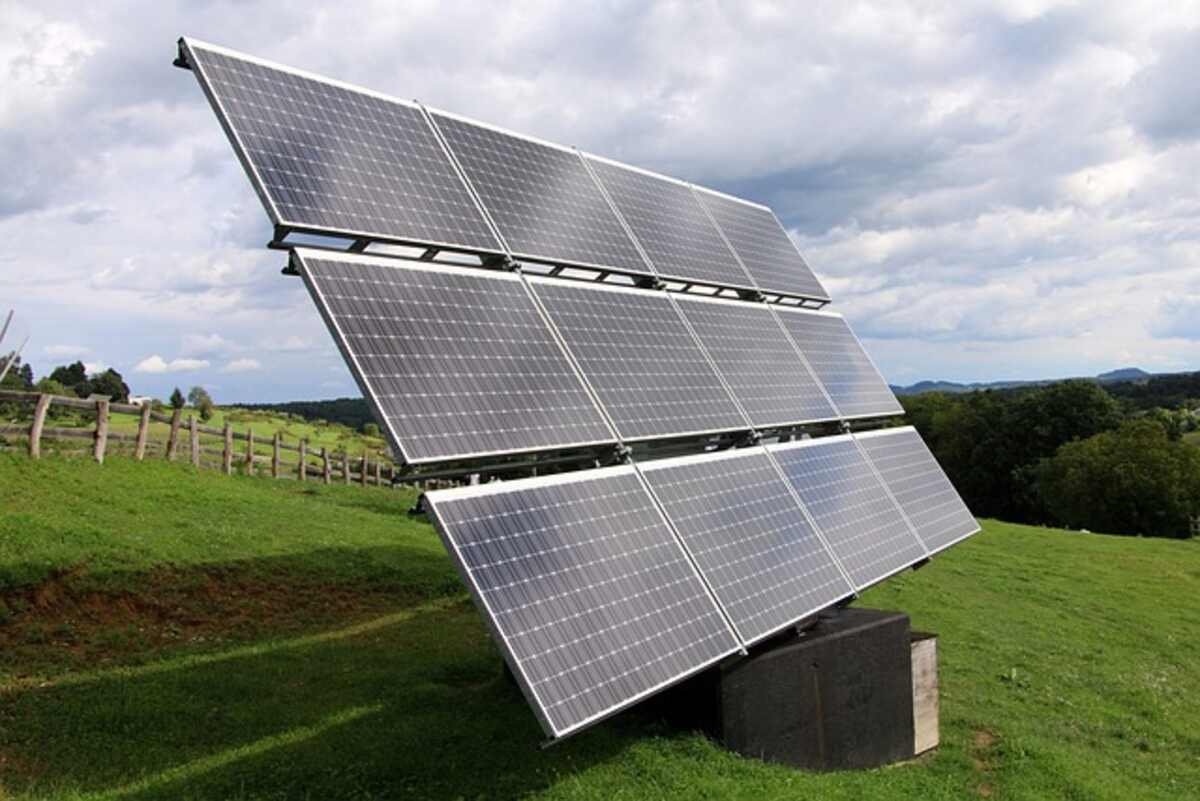After purchasing solar panels, you must select whether to install them on your roof or garden. This is the simplest option if you have a large backyard and don’t mind them blocking your view of the garden. The panels on the roof, however, are out of the way. Thus, this option is preferred by most. No matter the approach you select, you’ll need a precise plan to avoid costly mistakes and satisfy the requirements of your local building authority.
Solar panel mounting in the ground.
Each array can be mounted on a pole, and the panels’ vertical angle can be adjusted to face the sun at optimal angles throughout the year. The panels should be tilted at a grade equivalent to your latitude in the spring and fall. In the summer, the tip should be -15 degrees latitude, and in the winter, it should be +15 degrees latitude. Solar supply stores sell a variety of mounting options, from pole mounts to ground-based racks. A tracking unit that moves with the sun throughout the day can be purchased, but it is expensive and likely won’t provide enough electricity to justify the investment. Alternatively, you can use the readily available construction components to create your own mount. Most municipalities have ordinances requiring your panels to be behind a fence or elevated 8 feet (2.5 meters) above ground level to keep them out of the reach of children and pets.
Solar Panels are Installed on the Roof.
Your roof’s pitch should be your initial thought. The most accessible and aesthetically acceptable method involves mounting the panels on the plane of the roof, provided the top is not too flat. You should be fine if your roof pitch is the same as your latitude. Also acceptable is a fluctuation of up to 15 degrees; racks that slant your panels must be constructed for more significant variation or a flat roof. Since you don’t want to build a solar system only to have a leaky roof, that’s the next thing to consider. If you have a composition or metal roof, you may install it yourself with the help of a roofing compound; if you have a concrete or tile roof, however, you need to hire a professional roofer.
Most importantly, a standoff must be firmly bolted to a roof rafter or other framework. Your array should be secured before the storm hits. Make sure there is no leakage by flashing and sealing the standoff thoroughly. To accommodate the length of the aluminum tube used for the bottom rail of the array, the standoffs should be placed approximately 4 feet (1 1/3 meters) apart. The solar panel’s top is secured with a second rail. Now you may mount the panels into place using the channel and sliding brackets. However, we cannot proceed until we have adequately grounded the rails and installed all the necessary electrical wire and conduit.
Conduit and wiring installation.
A wiring schematic, including the desired wire size, conduit, and junction boxes, will be included in the plan submitted to the building department. Always refer to a wire size table to determine the appropriate wire size based on the voltage and distance to the inverter. Since using a wire size more extensive than required will mitigate heat generation and consequent voltage drop, I recommend doing so. Due to the difficulty of making repairs after the fact, all boxes and connections must be made watertight. At this point, you can begin installing the panels and connecting the wiring. Remember that the meetings will start producing electricity as soon as the sun reaches them, so avoid touching any exposed wires and ensure the inverter is not connected.
My name is Bruce Clancy, and I’ve been a DIY enthusiast for the past quarter-century and a half. During that period, I learned a lot about homeowners’ difficulties when improving their abilities and taking on new projects. Due to the increasing cost of utilities, I have decided to focus on residential solar panel installation. DIYSolarSecrets.com is where you should go if you want to learn more about constructing and installing solar panels.

